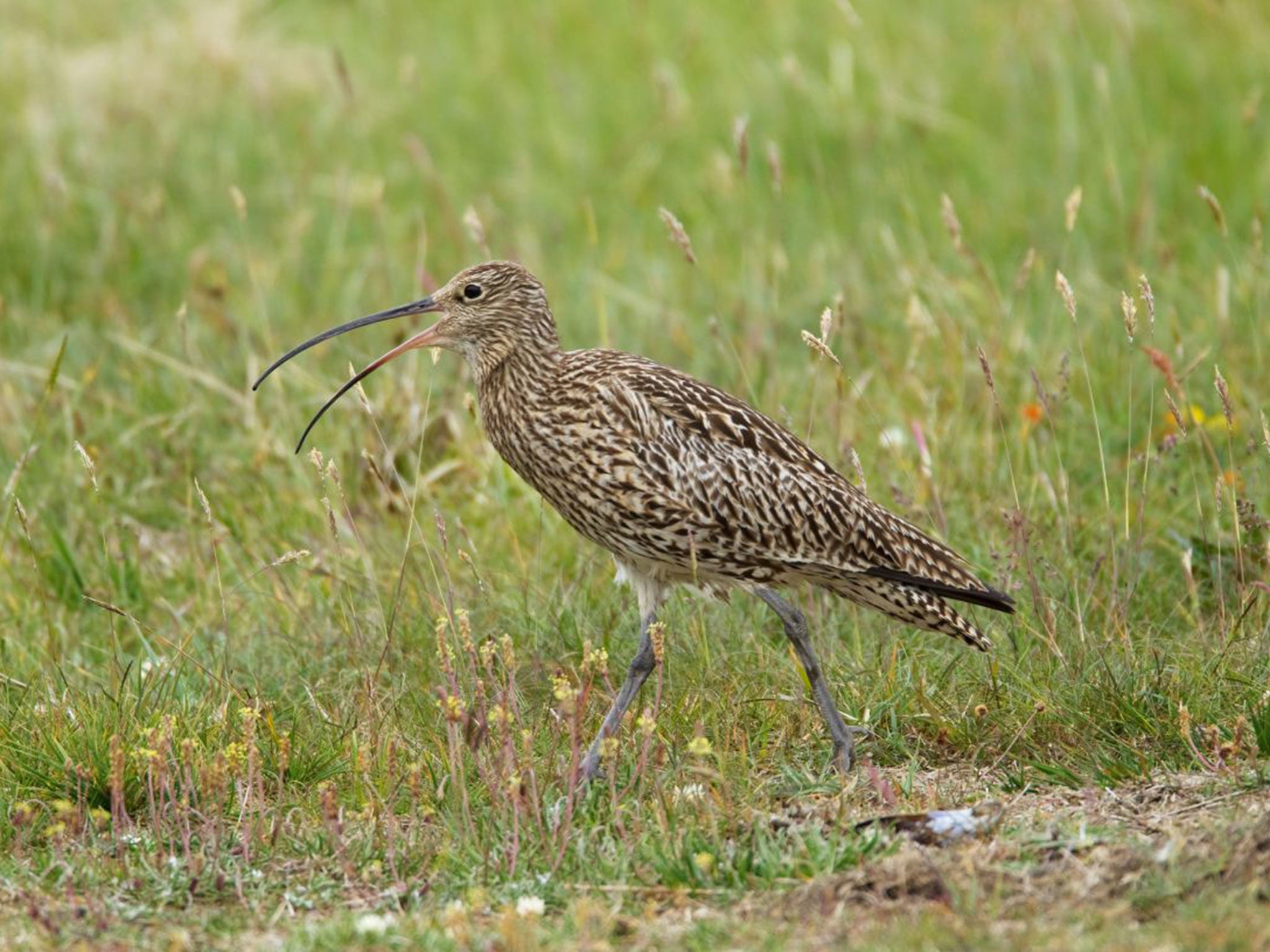More than a quarter of British birds now on conservation ‘red list’
'The call of the curlew is one of the really magical elements of British nature, celebrated in poetry and song ... now we know that we are losing them'

Your support helps us to tell the story
From reproductive rights to climate change to Big Tech, The Independent is on the ground when the story is developing. Whether it's investigating the financials of Elon Musk's pro-Trump PAC or producing our latest documentary, 'The A Word', which shines a light on the American women fighting for reproductive rights, we know how important it is to parse out the facts from the messaging.
At such a critical moment in US history, we need reporters on the ground. Your donation allows us to keep sending journalists to speak to both sides of the story.
The Independent is trusted by Americans across the entire political spectrum. And unlike many other quality news outlets, we choose not to lock Americans out of our reporting and analysis with paywalls. We believe quality journalism should be available to everyone, paid for by those who can afford it.
Your support makes all the difference.More than a quarter of Britain’s birds are now on a "red list" of threatened species after the addition of the curlew, nightingale, puffin and others, according to a new report.
The State of the UK’s Birds report by the Royal Society for the Protection of Birds, the British Trust for Ornithology and other conservation groups said the number of species on a red list of ‘Birds of Conservation Concern’ had risen from 52 in 2009 to 67 in 2015.
Three species, Temminck’s stints, wrynecks and serins, are now no longer classed as British breeding birds.
However there was some good news.
The golden eagle population has gone up by 15 per cent since 2003 and there are now more than 1,000 pairs of cirl buntings after 25 years of conservation work to save them from disappearing.
And 22 species on the conservation list were moved from “amber” to “green” status. Bitterns and nightjars, also the subject of much conservation work, were moved from red to amber.
"The latest Birds of Conservation Concern assessment used the latest monitoring data to assign species to red, amber and green lists of conservation concern," the report said.
"The red list grew substantially, with a net increase of 15, from 52 species in 2009 to 67 in 2015. More than a quarter of the species assessed are now red-listed."
The decline of the curlew is causing particular concern.
Geoff Hilton, head of conservation science at conservation group WWT, said: “The call of the curlew is one of the really magical elements of British nature, celebrated in poetry and song.
“Now we know that we are losing them; fewer and fewer people are getting to experience their song.
“But the curlew has one big thing in its favour: it is loved by many, many people. I’ve seen the enthusiasm and determination to turn their fortunes around – from farmers, conservationists and the public – and this convinces me that we can do so.”
The reported said the plight of farmland birds was a “serious concern”.
“Twelve farmland species are red-listed and the majority of these, including turtle doves and corn buntings, continue to decline,” it said.
“No new farmland birds joined the red list in 2015, but that simply reflects that those likely to be impacted adversely by modern farming practices are red-listed already.”
But woodland birds made up more red-listed species than any other group with a total of 16, including nightingales, woodcocks and pied flycatchers.
And marine species are also in trouble.
“Colonies of breeding seabirds provide one of the UK’s greatest wildlife spectacles and are, arguably, our most important ornithological feature in international terms,” the report said.
“But many seabirds are in decline: shags, kittiwakes and puffins take the number of Red-listed seabird species to seven.”
The loss of the wryneck is of historic significance.
"This is not the loss of a transient visitor, but the extinction as a breeding bird of a species that was once widespread across the country," the report said.
"In the late 19th century, this bird of open woodland, heathland, parks and large gardens was recorded breeding in 54 counties across England and Wales, and was sufficiently common that in 1912 the RSPB was advertising bird boxes specifically for wrynecks.
"But by this point, wrynecks were actually in decline and already lost from Wales. By the 1950s the species had contracted further, with few found away from southeast England.
"This decline continued until regular breeding ceased in England by the 1970s. At the same time there were signs of hope for wrynecks as a small population established and grew in the pine forests of northern Scotland.
"But mirroring the tales of Temminck’s stints and serins, this colonisation faltered. Although occasional sightings are still reported, the last known breeding in Scotland was in 2002, and 1985 in England.
"Wrynecks thus earn the unfortunate distinction of being the first once-widespread breeding species to be lost from the UK for nearly 200 years, since great bustards were hunted to extinction in the 1830s."
Join our commenting forum
Join thought-provoking conversations, follow other Independent readers and see their replies
Comments